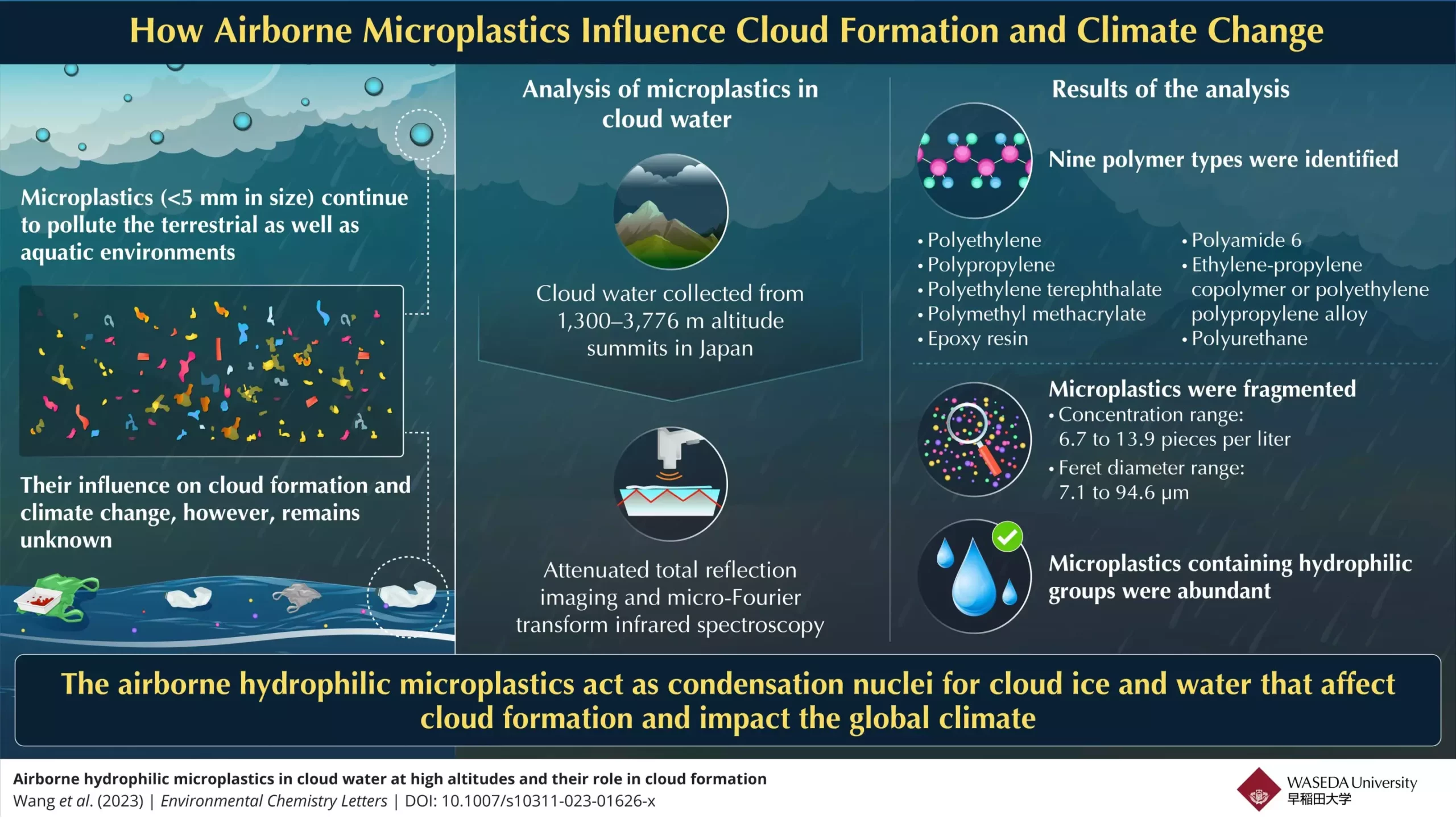Plastic pollution is a global environmental crisis that has gained significant attention in recent years. One aspect of this crisis is the presence of microplastics, small plastic particles that are less than 5 mm in size. These microplastics can originate from various sources, including industrial effluents and the degradation of larger plastic waste. Shockingly, research has revealed that humans and animals are ingesting and inhaling large quantities of microplastics, which can be found in multiple organs such as the lungs, heart, blood, placenta, and feces.
While the majority of studies on microplastics have focused on their presence in aquatic ecosystems, little attention has been given to their impact on cloud formation and climate change. However, a recent study conducted by a group of Japanese researchers led by Professor Hiroshi Okochi from Waseda University has shed light on the role of airborne microplastics (AMPs) in the biosphere. Published in the journal Environmental Chemistry Letters, the study highlights the adverse effects of microplastics on both human health and the climate.
To investigate the presence and properties of microplastics in the troposphere and the atmospheric boundary layer, the research team collected cloud water samples from various locations, including the summit of Mt. Fuji, the south-eastern foothills of Mt. Fuji (Tarobo), and the summit of Mt. Oyama. These regions were chosen due to their altitudes ranging from 1,300 to 3,776 meters.
Advanced imaging techniques such as attenuated total reflection imaging and micro-Fourier transform infrared spectroscopy were employed to identify the microplastics in the cloud water samples. The researchers discovered the presence of nine different types of polymers and one type of rubber in the airborne microplastics. Notably, a significant amount of the detected polypropylene was degraded and exhibited carbonyl (C=O) and/or hydroxyl (OH) groups. Furthermore, the findings revealed that the Feret diameters of these microplastics ranged from 7.1 µm to 94.6 µm, with the smallest particles observed in the free troposphere. The cloud water also contained a high concentration of hydrophilic polymers, suggesting their role as “cloud condensation nuclei” and their contribution to rapid cloud formation.
The presence and accumulation of airborne microplastics in the atmosphere have significant implications for climate change and biodiversity. The researchers warn that if the issue of “plastic air pollution” is not addressed proactively, it may lead to irreversible and severe environmental damage in the future. AMPs are known to be degraded more rapidly in the upper atmosphere due to strong ultraviolet radiation, releasing greenhouse gases that contribute to global warming.
Additionally, the rapid cloud formation facilitated by microplastics could have far-reaching consequences for the overall climate. Clouds play a crucial role in regulating the Earth’s temperature and precipitation patterns. Therefore, the presence of microplastics as cloud condensation nuclei may disrupt these processes, leading to shifts in weather patterns and potentially exacerbating climate change.
Moreover, the accumulation of airborne microplastics, particularly in polar regions, poses a threat to biodiversity. The ecological balance of the planet could be heavily impacted, resulting in the loss of various species and disruptions to ecosystems.
The findings from this study emphasize the urgent need for proactive measures to address the issue of airborne microplastics. Efforts must be made to reduce the release of microplastics into the environment, whether through improved waste management systems or the development of alternative materials. Additionally, further research is required to better understand the long-term effects of microplastics on human health and the environment.
The presence of airborne microplastics has far-reaching consequences for both climate change and human health. These tiny particles have been found to play a role in rapid cloud formation and have been detected in various organs within the human body. It is essential that immediate action is taken to mitigate the release and accumulation of microplastics to minimize the environmental and health risks they pose. Only through proactive measures can we hope to protect our planet and ensure a sustainable future for all.



Leave a Reply